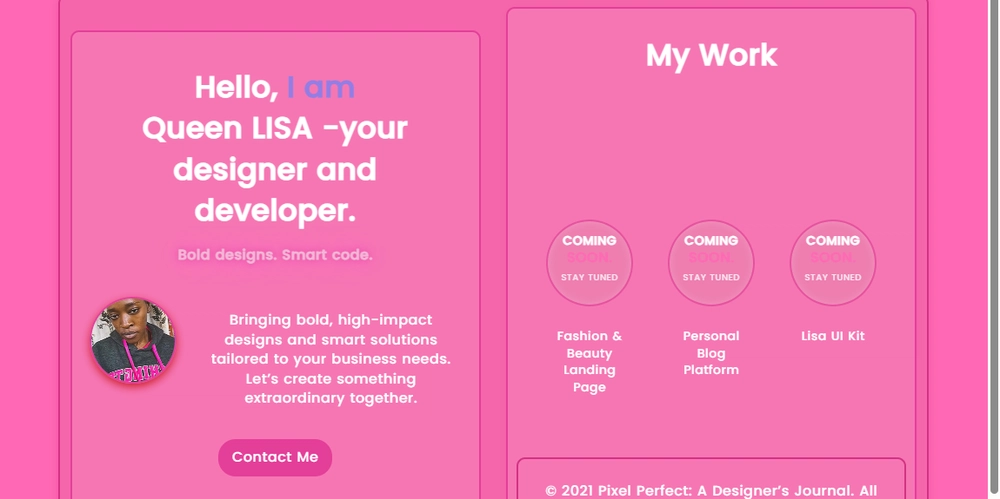A2A vs. MCP: Data Security Woes and a Subtle Fix
If you’re diving into Google's A2A (Agent-to-Agent) or Anthropic's MCP (Model Context Protocol) to supercharge your AI workflows, you’ve probably hit a wall: data security. These protocols promise seamless agent communication or tool integration, but they come with risks that can make any developer sweat—think command injection, data leaks, and trust issues. I’ve been exploring both, and I’ll break down the underlying problems, share my thoughts, and point to a subtle solution that’s helped me sleep better: Phala Cloud’s TEE-powered hosting. Let’s get into it. The Data Security Dilemma with A2A and MCP A2A and MCP are designed to connect AI agents or models to external systems, but they share a big flaw: they often rely on third-party servers or intermediaries, which can be weak links. Here’s what I’ve found digging into both: Security Vulnerabilities: MCP is notorious for risks like command injection, Server-Side Request Forgery (SSRF), and prompt injection. Attackers can run arbitrary code or manipulate AI behavior, as noted in Phala Network’s MCP security post. A2A isn’t immune either—unsecured channels can lead to man-in-the-middle attacks, exposing sensitive data during agent communication. No Easy Auditing: Neither protocol has standardized tools to verify security. For MCP, the lack of vulnerability scanners means you’re often guessing if your server’s safe (Swirl AI Newsletter). A2A faces similar issues, with manual checks eating up time. New Threats: MCP’s seen sneaky exploits like the “WhatsApp message leak,” where a malicious server flips from harmless to data-stealing after approval. A2A risks data exposure if agents communicate through compromised intermediaries. Trust and Privacy: With over 2000 MCP servers out there, trusting one with your data—like user records or API keys—is a gamble, especially with weak authentication standards. A2A’s reliance on intermediaries raises similar privacy concerns for sensitive apps. As a developer, these challenges make me hesitant to use A2A or MCP for projects where data security is critical—like healthcare or finance apps. The potential is there, but the risks are real. My Thoughts: We Need Better Security Foundations Here’s where I stand: A2A and MCP are powerful for connecting AI systems, but their data security issues are a dealbreaker without the right safeguards. A2A’s agent communication is great for collaborative AI, but unsecured channels can expose data mid-transit. MCP’s ability to integrate AI with tools like databases or APIs is awesome, but vulnerabilities like command injection and the lack of auditing tools make it a minefield. The “WhatsApp leak” exploit really drove this home for me—it’s a reminder that even user-approved servers can turn rogue. Trust is another hurdle. With MCP’s sprawling ecosystem, how do you know a server won’t leak your data? A2A’s intermediaries pose the same question. Privacy-critical apps can’t afford these risks, and the overhype around both protocols doesn’t help—it pushes devs to adopt them without fully understanding the security trade-offs. In my view, we need a foundation that isolates computations, verifies integrity, and builds trust through transparency. That’s where I’ve found Phala Cloud to be a subtle game-changer, but more on that later. What You Can Build (And What’s at Stake) Let’s talk use cases to see why this matters: A2A for Collaborative AI: Imagine AI agents working together on a real-time dashboard—one fetches data, another analyzes it. Without secure channels, your data could leak mid-communication. MCP for Tool Integration: Use MCP to connect your AI to a Supabase database, automating config updates in a Next.js app. But if the MCP server’s compromised, your API keys could be exposed. These are powerful ideas, but the stakes are high. A data breach could ruin user trust, especially in privacy-sensitive apps. We need a way to deploy these protocols securely, ensuring data stays private and untampered. A Subtle Fix with Phala Cloud After wrestling with these issues, I’ve been exploring Phala Cloud, and it’s quietly solved a lot of my concerns. Phala Cloud uses Trusted Execution Environments (TEEs) to isolate your code and data in a hardware-secured enclave, blocking attacks like command injection or SSRF. Their remote attestation feature lets you verify that your server’s running securely, addressing trust issues—no more guessing if a third-party server is safe. The decentralized root-of-trust spreads risk across nodes, and the open-source Dstack SDK (Dstack SDK) lets you inspect everything, ensuring transparency. For me, Phala Cloud’s TEE-powered hosting could be the foundation A2A and MCP need to shine—secure, verifiable, and developer-friendly. Get Building Securely A2A and MCP can transform your AI projects, but data security shouldn’t hold you back. Try deploying on Phala Cloud to lock down your workflows. Got though

If you’re diving into Google's A2A (Agent-to-Agent) or Anthropic's MCP (Model Context Protocol) to supercharge your AI workflows, you’ve probably hit a wall: data security. These protocols promise seamless agent communication or tool integration, but they come with risks that can make any developer sweat—think command injection, data leaks, and trust issues.
I’ve been exploring both, and I’ll break down the underlying problems, share my thoughts, and point to a subtle solution that’s helped me sleep better: Phala Cloud’s TEE-powered hosting. Let’s get into it.
The Data Security Dilemma with A2A and MCP
A2A and MCP are designed to connect AI agents or models to external systems, but they share a big flaw: they often rely on third-party servers or intermediaries, which can be weak links.
Here’s what I’ve found digging into both:
Security Vulnerabilities: MCP is notorious for risks like command injection, Server-Side Request Forgery (SSRF), and prompt injection. Attackers can run arbitrary code or manipulate AI behavior, as noted in Phala Network’s MCP security post. A2A isn’t immune either—unsecured channels can lead to man-in-the-middle attacks, exposing sensitive data during agent communication.
No Easy Auditing: Neither protocol has standardized tools to verify security. For MCP, the lack of vulnerability scanners means you’re often guessing if your server’s safe (Swirl AI Newsletter). A2A faces similar issues, with manual checks eating up time.
New Threats: MCP’s seen sneaky exploits like the “WhatsApp message leak,” where a malicious server flips from harmless to data-stealing after approval. A2A risks data exposure if agents communicate through compromised intermediaries.
Trust and Privacy: With over 2000 MCP servers out there, trusting one with your data—like user records or API keys—is a gamble, especially with weak authentication standards. A2A’s reliance on intermediaries raises similar privacy concerns for sensitive apps.
As a developer, these challenges make me hesitant to use A2A or MCP for projects where data security is critical—like healthcare or finance apps. The potential is there, but the risks are real.
My Thoughts: We Need Better Security Foundations
Here’s where I stand: A2A and MCP are powerful for connecting AI systems, but their data security issues are a dealbreaker without the right safeguards. A2A’s agent communication is great for collaborative AI, but unsecured channels can expose data mid-transit. MCP’s ability to integrate AI with tools like databases or APIs is awesome, but vulnerabilities like command injection and the lack of auditing tools make it a minefield. The “WhatsApp leak” exploit really drove this home for me—it’s a reminder that even user-approved servers can turn rogue.
Trust is another hurdle. With MCP’s sprawling ecosystem, how do you know a server won’t leak your data? A2A’s intermediaries pose the same question. Privacy-critical apps can’t afford these risks, and the overhype around both protocols doesn’t help—it pushes devs to adopt them without fully understanding the security trade-offs.
In my view, we need a foundation that isolates computations, verifies integrity, and builds trust through transparency. That’s where I’ve found Phala Cloud to be a subtle game-changer, but more on that later.
What You Can Build (And What’s at Stake)
Let’s talk use cases to see why this matters:
A2A for Collaborative AI: Imagine AI agents working together on a real-time dashboard—one fetches data, another analyzes it. Without secure channels, your data could leak mid-communication.
MCP for Tool Integration: Use MCP to connect your AI to a Supabase database, automating config updates in a Next.js app. But if the MCP server’s compromised, your API keys could be exposed.
These are powerful ideas, but the stakes are high. A data breach could ruin user trust, especially in privacy-sensitive apps. We need a way to deploy these protocols securely, ensuring data stays private and untampered.
A Subtle Fix with Phala Cloud
After wrestling with these issues, I’ve been exploring Phala Cloud, and it’s quietly solved a lot of my concerns.
Phala Cloud uses Trusted Execution Environments (TEEs) to isolate your code and data in a hardware-secured enclave, blocking attacks like command injection or SSRF.
Their remote attestation feature lets you verify that your server’s running securely, addressing trust issues—no more guessing if a third-party server is safe.
The decentralized root-of-trust spreads risk across nodes, and the open-source Dstack SDK (Dstack SDK) lets you inspect everything, ensuring transparency.
For me, Phala Cloud’s TEE-powered hosting could be the foundation A2A and MCP need to shine—secure, verifiable, and developer-friendly.
Get Building Securely
A2A and MCP can transform your AI projects, but data security shouldn’t hold you back. Try deploying on Phala Cloud to lock down your workflows.
Got thoughts on A2A or MCP security? Drop them in the comments—I’d love to hear your take!










































































































































































![[The AI Show Episode 144]: ChatGPT’s New Memory, Shopify CEO’s Leaked “AI First” Memo, Google Cloud Next Releases, o3 and o4-mini Coming Soon & Llama 4’s Rocky Launch](https://www.marketingaiinstitute.com/hubfs/ep%20144%20cover.png)


















































































































![[DEALS] The All-in-One Microsoft Office Pro 2019 for Windows: Lifetime License + Windows 11 Pro Bundle (89% off) & Other Deals Up To 98% Off](https://www.javacodegeeks.com/wp-content/uploads/2012/12/jcg-logo.jpg)





































![Is this too much for a modular monolith system? [closed]](https://i.sstatic.net/pYL1nsfg.png)






















































































































_Andreas_Prott_Alamy.jpg?width=1280&auto=webp&quality=80&disable=upscale#)
































































































![What features do you get with Gemini Advanced? [April 2025]](https://i0.wp.com/9to5google.com/wp-content/uploads/sites/4/2024/02/gemini-advanced-cover.jpg?resize=1200%2C628&quality=82&strip=all&ssl=1)













![Apple Shares Official Trailer for 'Long Way Home' Starring Ewan McGregor and Charley Boorman [Video]](https://www.iclarified.com/images/news/97069/97069/97069-640.jpg)
![Apple Watch Series 10 Back On Sale for $299! [Lowest Price Ever]](https://www.iclarified.com/images/news/96657/96657/96657-640.jpg)
![EU Postpones Apple App Store Fines Amid Tariff Negotiations [Report]](https://www.iclarified.com/images/news/97068/97068/97068-640.jpg)
![Apple Slips to Fifth in China's Smartphone Market with 9% Decline [Report]](https://www.iclarified.com/images/news/97065/97065/97065-640.jpg)




































































































































